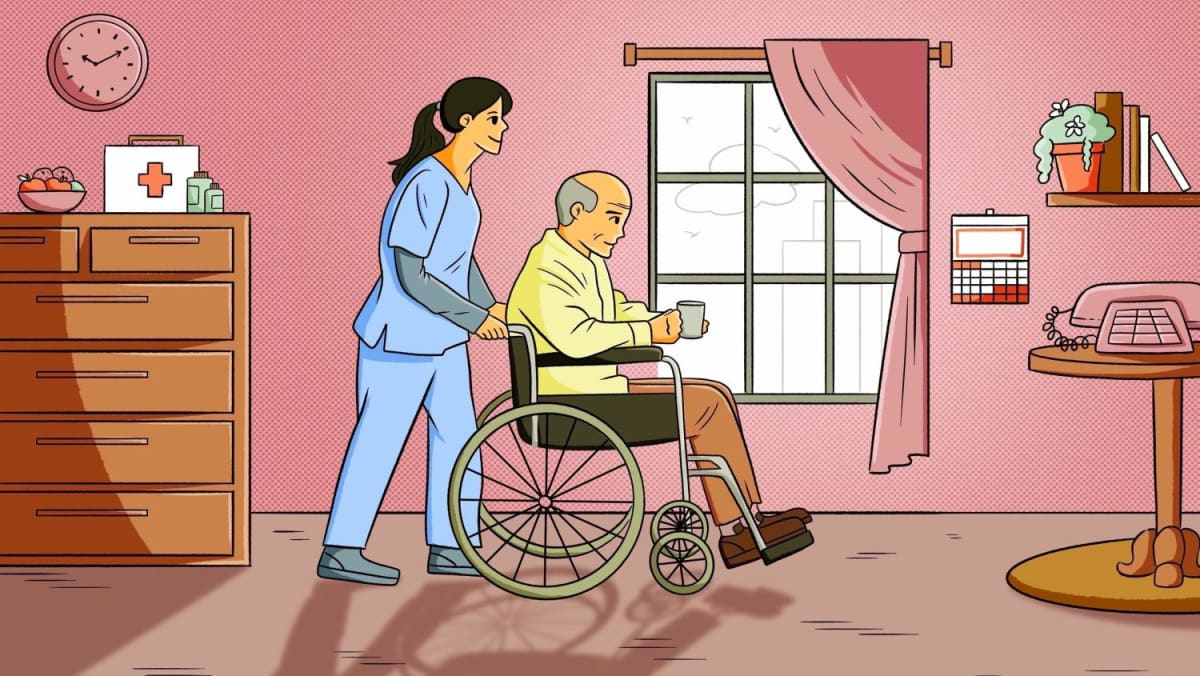
Each week, TODAY’s long-running Big Read series delves into the trends and issues that matter. This week, we look at the eldercare options available for a rapidly ageing population in Singapore, including a relatively new option of assisted living services. This is a shortened version of the full feature, which can be found here.
 By
By
Renald Loh
Navene Elangovan
Experts interviewed by TODAY said that the issue of caregiving options has become even more pronounced in light of a rapidly ageing population.
The Ministry of Health (MOH) said this year that by 2030, around 100,000 seniors will require help with at least one daily living activity, while about 83,000 seniors will live alone.
In response to TODAY’s queries on how it is boosting caregiving capacity for seniors and whether there are specific plans to help the “missing middle” group, MOH said on Sunday (July 2) that it has “significantly expanded aged care capacity”.
Since 2015, MOH has provided around 4,800 more day care places, 4,800 more home care places and 4,900 more nursing home beds to provide a total of 8,300 day care places, 11,700 home care places and 16,900 nursing home beds as of end 2021.
THE BIG PICTURE
In response to the growing need for more eldercare services, one particular type of care arrangement has sprung up in Singapore in recent years — community or assisted living, which provides professional assistance to elderly who require some help with basic activities of daily living as well as the company of other seniors.
Dr Belinda Wee, who co-founded the Assisted Living Facilities Association in 2018 and an assisted living facility named St Bernadette Lifestyle Village along Bukit Timah Road in 2015, believes that it is crucial for seniors to be placed in the most suitable facility based on their needs in order to age as healthily as possible — and that assisted living facilities can play a key role in filling that gap.
St Bernadette Lifestyle Village has since expanded to include branches at Adam Road and Sembawang. Each landed facility houses eight seniors each.
They each pay about S$4,600 to S$5,800 monthly, depending on location and room type and are looked after by trained caregivers rostered round the clock.
Red Crowns Senior Living, another local care provider that started offering assisted living services in April 2021, came under the microscope when MOM announced last month that it was investigating the firm for a possible breach of foreign manpower laws.
It rents Housing and Development Board (HDB) flats and condominiums for use as assisted living facilities, and is currently serving 130 elderly clients in 33 homes across Singapore.
They each pay S$2,900 to S$6,300 per month for assisted living, depending on location and caregiving service.
The fees charged by Red Crowns and St Bernadette include meals and social activities.
Last Tuesday (June 20), the Urban Redevelopment Authority (URA) and MOH announced that it had awarded the tender for a Parry Avenue site intended for a private assisted living facility.
The development in the Kovan area will comprise 200 assisted living apartment units, a nursing home with 100 beds, a wellness clubhouse and a geriatric care centre.
It is expected to be ready in 2026 or 2027.
When it comes to ageing at home with the aid of a live-in domestic helper, experts said that the reliance on such workers is not a sustainable model of caregiving, as the countries they hail from are also ageing.“One day they are going to cut that away from us and we will be in trouble,” said Dr Kelvin Tan, head of the Minor in Applied Ageing Studies programme at the Singapore University of Social Sciences (SUSS).
To manage the ageing population better and provide caregivers with more help, there has to be a fundamental shift from “reactive” to “preventive” measures in the country’s approach to tackling the issue, said experts and eldercare services providers.
Mr Tommy Tan of Hovi Care, which provides various eldercare services, said: “One possible way is for the Government to support and encourage the private sector to build up more facilities to augment the public-funded centres.”
Other suggestions by the experts include expanding options and support for caregivers at a grassroots level, such as having community managers at HDB blocks to assist seniors living there.
The use of technology to overcome manpower shortages was another proposal.
Ultimately, experts and practitioners familiar with Singapore’s eldercare industry agree that both the public and private sectors have to work more closely together to provide more options than what currently exists, if the country is to enable its seniors to age well.
For now, piloting new concepts like assisted living and encouraging more private operators are a step in the right direction, though operators must be confident that such models are financially viable.
Experts cautioned that the stakes are high if Singapore is not able to offer enough suitable caregiving options in the coming years.In such a scenario, Dr Tan of SUSS said that more people may have to leave the workforce to care for their ageing family members, while the cost of caregiving services will spiral due to higher demand.He added: “We should really prepare ourselves early.”
